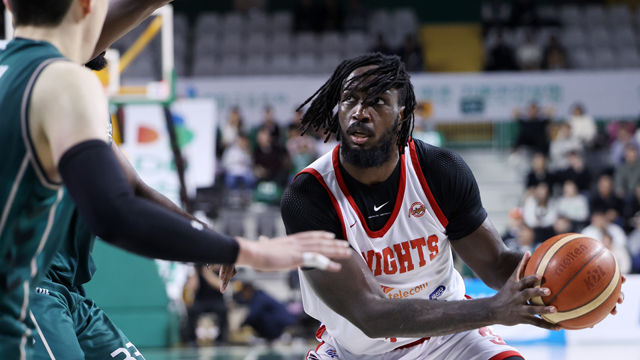How to Survive the KBL 'Hard Call Era'...Run or Shoot Before You Touch
How to Survive the KBL 'Hard Call Era'...Run or Shoot Before You Touch
Blog Article

In the early stages of this season's professional basketball season, the KBL's “hard call” philosophy has been strategically utilized by several teams.
Seoul SK, which is leading the league with 8 wins and 2 losses, and Daegu KOGAS, which is right behind them with 7 wins and 2 losses, both have their own ways of avoiding 'lenient fouls' and unleashing their offense.
SK, led by head coach Jeon Hee-cheol, has been playing “fast basketball,” which means finishing the offense before there is a struggle in the first place.
It is noteworthy that the speed of the offense is even faster than SK's previous offense.
SK's average fast break points this season is 20.9 points. That's nearly double what it was last season (11.1 points).
The team set a new franchise record with 19 fastbreak points in the opening game against Anyang Chung-kwan-jang, and then followed that up with 19 fastbreak points against Busan KCC on Nov. 9 in a 36-point victory.
Jamil Warney, the team's second-leading rebounder (12.5), is now playing without the ball.
This has allowed key offensive players such as Oh Jae-hyun, Kim Sun-hyung, and Ahn Young-joon to charge towards the opponent's rim on defensive rebounds instead of going to the big man for the ball.
In fact, Warney is averaging 5.9 assists per game this season, his best numbers since joining the league in the 2019-2020 season.
Despite leading the team in scoring (83.8 points), SK shoots just 27.4 percent from three-point range, but has a 55.7 percent two-point percentage (first). 메이저사이트 What they lack in outside shooting, they make up for in high percentage fastbreak points.
There is relatively little room for physicality in fast breaks, which are made before the opponent is set up.
SK has adapted to KBL Commissioner Yoo Jae-hak's 'hard call' philosophy by reducing the number of fights.
Unlike SK, which specializes more in its traditional strength of fast breaks, KOGAS, led by Kang Hyuk, relies on its outside shooters.
KOGAS, which ranks second in team scoring (83.1 points), is first in three-point percentage (38.5 percent). They are second in 3-point attempts (30.3), just behind Goyang Sono (31.2), who are known as the “3-point team”.
That's 30 three-pointers per game at a rate of nearly 40 percent.
KOGAS's top three three-point shooters are Andrew Nicholson (6.8), Nak-hyun Kim (5.8), and Samjosef Belangel (5.1). Combined, they make 7.3 three-pointers per game.
The three players are characterized by their ability to shake off defenders in one-on-one offensive situations and shoot threes with skill.
Whether it's throwing a three over a defender's head like Nicholson, who has a high percentage, or dribbling away from a defender like Belangel and Kim Nak-hyun, they don't have to fight for the shot.
Nicholson's three-point shooting also means that the opposing big man is drawn out from under the basket, so KOGAS players can avoid the extra struggle when breaking through.
Coincidentally, SK and KOGAS are also two teams that excel on defense.
SK is averaging 8.7 steals per game. Their strategy is to play a defense that presses the opponent hard with generous physicality and then convert steals into fast break points.
“We're good at fastbreaks, and we do a lot of them, but as we've turned into a 'hard call' team, we're getting a lot of steals instead of fouls,” Ahn said after the KCC game on Sept. 9. ”I think our fastbreaks have increased because our opponents are making more mistakes.”
In fact, teams against SK commit an average of 14 mistakes per game. SK is the team that causes the most mistakes.
KOGAS is second in this category (13.4).
KOG's head coach Kang Hyuk, who acquired perimeter guard Jung Sung-woo before the season started, has been able to convert forward Shin Seung-min into a perimeter defender as well, giving him a solid defensive core.
KOGAS is the only one of the 10 teams in the league to allow fewer than 60 points per game (67.3). Teams facing KOGAS are shooting 26.2 percent from three-point range.
Unlike the two teams that have succeeded in adjusting their teams to the new officiating, other teams are still adjusting. This is no different for the top teams.
Ulsan Hyundai Mobis head coach Cho Dong-hyun, who sits in third place behind the two teams with a 7-3 record, said before their match against Goyang Sono on March 13, “There's a reason we've been training in the Philippines and Japan since the summer. The Philippines fights so hard that they almost fight even in college games,” he said, adding, ”We accept that and try to practice to do the same.”
“I tell them, 'Basketball is a little different nowadays. “I tell them, 'Basketball is a little bit different these days,'” he said, ”and you almost have to grab (the body) to keep them from getting the ball, so you have to be more precise. You have to get the ball where you want it, and you have to be more accurate with your screens so you can react.”